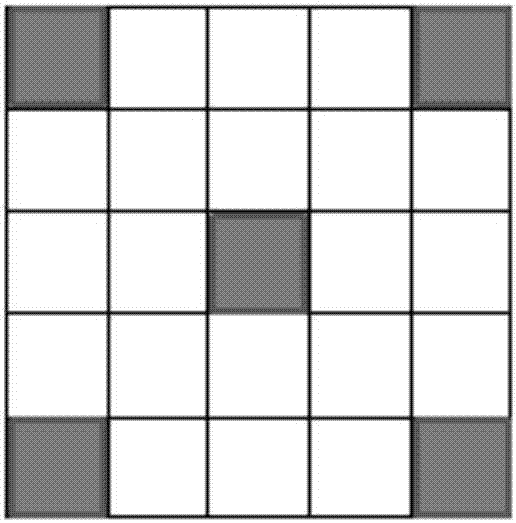Method for estimating biomass of wetland plants through aerial photographic remote sensing of unmanned aerial vehicle
A wetland plant and aerial photography technology, applied in the interpretation of photos, etc., can solve problems such as insufficient precision, low degree of fitting, and error in wetland vegetation information, and achieve the effects of easy promotion, wide applicability, and high precision
- Summary
- Abstract
- Description
- Claims
- Application Information
AI Technical Summary
Problems solved by technology
Method used
Image
Examples
Embodiment 1
[0028] The UAV aerial photography remote sensing platform and parameters adopted in the present embodiment are as follows:
[0029] The maximum pixel of the camera sensor on the drone is 7360×4912, the fixed aperture size is f / 4.0, the ISO value is 100, the shutter speed is 1 / 1000S, and the camera parameters are called to compensate for geometric distortion. The lens parameters are fixed focal length 35mm; The man-machine uses the DJI M600 Pro six-rotor flying platform, and uses the assistant software DJI Assistan2 to calibrate; the air terminal GPS uses the HOLUX M241-A track recorder, and the drone is integrated with an inertial navigation system;
[0030] In order to obtain effective data in this embodiment, the overall planning and design of the flight mission is carried out before data collection, so as to ensure the validity of data acquisition and flight safety.
[0031] Considering that the horizontal overlap rate stipulated by flight surveying and mapping should be hi...
PUM
 Login to View More
Login to View More Abstract
Description
Claims
Application Information
 Login to View More
Login to View More - R&D
- Intellectual Property
- Life Sciences
- Materials
- Tech Scout
- Unparalleled Data Quality
- Higher Quality Content
- 60% Fewer Hallucinations
Browse by: Latest US Patents, China's latest patents, Technical Efficacy Thesaurus, Application Domain, Technology Topic, Popular Technical Reports.
© 2025 PatSnap. All rights reserved.Legal|Privacy policy|Modern Slavery Act Transparency Statement|Sitemap|About US| Contact US: help@patsnap.com



